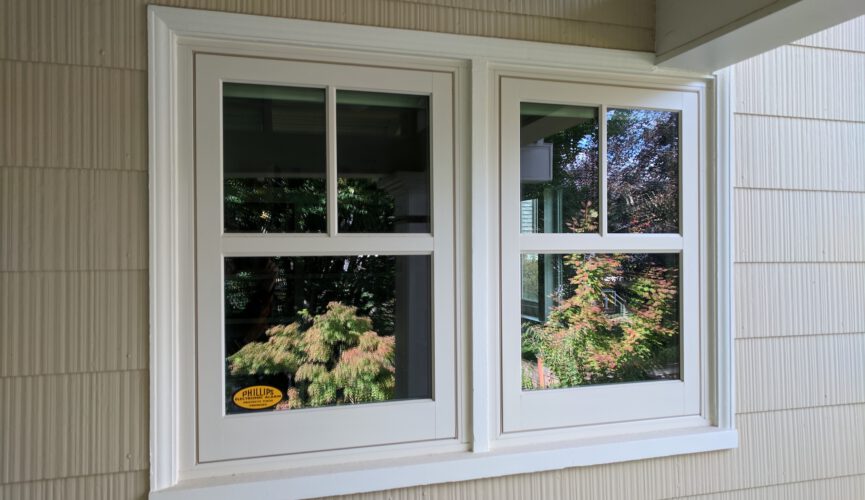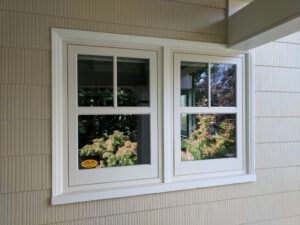If the windows in your home are showing signs of age, it’s likely time for replacement. New windows can enhance the beauty of any room and increase its resale value. Contact Window Replacement Fort Worth TX now!
Schedule a window consultation with a contractor to determine your options. A professional can recommend the best style and specs for your needs, including insulated frames and triple-pane glass.

Windows can be a great addition to a home, providing plenty of natural light, improving air quality and adding curb appeal. They also help lower energy bills, increase ROI and improve indoor comfort. But with all the choices out there, selecting the best ones can be a challenge. To make the process easier, homeowners should consider their personal style preferences and the architectural style of their homes when choosing window replacement styles.
The best window frames can provide a combination of visual appeal, durability and maintenance ease. Wood frames can be expensive and require a lot of upkeep, while vinyl and fiberglass are less costly but may not look as appealing. Composite frames, which blend wood shavings with plastic resins, can offer the best of both worlds. They are cost-effective and durable, yet they maintain the look of wood.
Once a homeowner decides on a frame type, it’s important to choose the right window styles to complement their home. Window style selection depends on the architectural design of the home and how the window will be used. For example, a bay or bow window can add visual interest to the home’s exterior while creating space inside and panoramic views of the surrounding landscape. They are ideal for Victorian, Tudor or traditional-style homes.
Other types of windows are better suited to contemporary or modern homes, such as sliding and picture windows. Sliding windows open horizontally and are easy to clean, making them a popular choice for walls adjacent to patios, decks and walkways. Picture windows are stationary and don’t open, but they provide ample natural light.
When choosing a replacement window, it’s also important to consider the size of the window opening. If a replacement window doesn’t fit, it will be difficult to install and use the window properly. Depending on the window style, homeowners should have between 1/2-inch and 1-inch of wiggle room to ensure a proper installation.
For those who want ventilation without the hassle of lifting a windowpane or cranking a handle, awning windows are an excellent option. They can be opened from the bottom or the top, and some even tilt inward for simple cleaning. However, homeowners should be aware that these windows aren’t suitable for areas where rain might blow in or if they could run into something outside the house.
Materials
When it comes to replacement windows, the style and material you choose will impact how your home looks and feels. It will also affect how long the windows last and their performance. This is why it’s so important to take your time and choose the right windows for your home and budget.
There are four common construction materials for replacement windows: vinyl, composite, clad wood and aluminum. Each has its own benefits and drawbacks, so it’s important to consider them carefully before making a purchase.
Vinyl is a popular option because it offers low upfront costs and requires little maintenance. However, it’s not as insulating as other materials, and it can fade in sunlight. Some vinyl windows have an outer coating that helps protect them from weather and sun damage.
Wood is another popular choice, and it provides a natural look that can complement any style of home. It’s also a good choice for new construction because it doesn’t conduct heat or cold as quickly as metal, and it can be painted in a variety of colors to match the exterior or interior decor. Wood windows typically require more regular maintenance, though, such as staining or painting, to protect them from moisture and prevent mildew and mold.
Aluminum is another popular option because it’s affordable and durable. It’s also relatively lightweight, which means it can support larger panes of glass than other materials. However, it’s not as insulated as other materials and can be difficult to work with. Plus, it can rust in certain climates, and it doesn’t hold up well to moisture.
Another popular option is clad wood, which combines the best elements of both vinyl and wood. It’s more expensive than vinyl, but it’s more insulating than wood and is less prone to warping or rotting. It also looks better than aluminum and doesn’t rust or need repainting. Clad wood windows are available in many styles, and they’re a great choice for older homes that need new, energy-efficient windows. They’re also an excellent choice for new construction because they’re easy to match with existing window openings.
Energy Efficiency
Many homeowners choose to replace their windows with the aim of saving on energy costs. But, how much you save will depend on where you live and what type of windows you’re replacing. The EPA estimates that replacing old single-pane windows with new Energy Star models can save homeowners $366 per year in heating and cooling costs.
Other factors that affect window performance are the frame material and glazing options. For instance, traditional wood frames provide excellent insulation but require regular maintenance to keep them in good shape. Vinyl and fiberglass frames are more cost-effective and durable, yet offer the same insulating benefits as wood. In terms of glazing, a double- or triple-pane window with argon or krypton gas sealed between each pane will further enhance its efficiency by reducing heat transfer and increasing thermal comfort. Additionally, low-E coatings can be applied to the glass to reflect sunlight and heat away from the home, further lowering energy consumption.
However, if you have older single-pane windows with outdated or damaged frames, simply upgrading the glass and coatings may not result in significant savings. You’ll also need to invest in other energy-saving measures such as caulking and weather stripping to make sure air doesn’t escape around the frame and erode the insulating value of your windows.
Another important factor that can influence how much you’ll save is your installation method. Full-frame replacement windows install the sash and frame into a stud wall, creating a tight seal that helps reduce energy loss. By contrast, insert windows (also called retrofit windows) fit inside existing frames and are held in place by the original exterior trim and siding.
If your existing frames are in good condition, an insert window is a great option that’s easy to install and keeps the overall look of your home intact. However, for windows that need replacing due to age or damage, full-frame replacement is a better choice that’s more expensive but offers superior performance for decades.
Installation
When a window is installed improperly it can create air and water leaks that increase energy bills, damage walls, promote mold growth and weaken the structure of a home. Proper installation of replacement windows is critical to maximizing their benefits.
When choosing a contractor to install your new windows, choose someone with a good reputation for quality work. Look for a company that offers both a warranty on the windows and a labor guarantee. Make sure to ask about their licensing and insurance coverage, as well as whether or not they are bonded. A bonded and insured contractor is required by most states to provide workers’ compensation and liability insurance for their employees.
Before you begin installing your replacement windows, remove all the window treatments from the frames and store them away in a safe place. It is also important to prepare the window opening by removing all nails, dirt, dust and debris from around the frame. You should also be aware that if your existing frame is too deep for the window you need to perform a “cut-back” by removing a strip from the framing at the bottom of the opening to allow for the proper fit of the new window.
Once the opening is prepped, it’s time to install the window itself. If you’re using a pocket-style window, which slides into the existing frame, make sure to measure your existing jambs (the vertical sides of the window frame) and compare them with the measurements on the new window to ensure that the window will fit.
If your old window frame is in bad shape, consider upgrading to a full-frame window replacement. This option will give you more options in terms of style and functionality, as it allows for the use of a more energy-efficient window and addresses any gaps or insulation deficiencies around the old frame.
During the installation process, check that your windows are level and plumb by measuring across the width of the frame with a tape measure. Shims can be used to correct any misalignments, but be careful not to over-shimming as this could cause the frame to bow and impede the function of the new window. Once the window is in place, seal any gaps wider than 1/4 inch with elastomeric caulking and fill smaller gaps with low-expansion foam.


